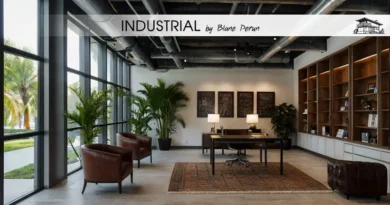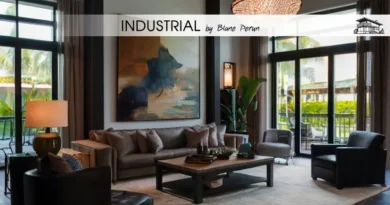Kitchen Interiors
Crafting Your Culinary Haven: The Essence of Kitchen Interior Design
When it comes to the heart of the home, nothing beats the warmth and vibrancy of a well-designed kitchen. Kitchen interior design isn’t just about choosing colors and fixtures; it’s about creating a space where memories are made, recipes are born, and conversations flow as easily as the wine. With the rise of open-concept living and the kitchen increasingly becoming the centerpiece of the home, getting your kitchen’s design right has never been more crucial. It’s a blend of art and science, where functionality meets personal style, and every detail, from the countertops to the cabinetry, plays a role in the symphony of your home’s interior.

The Blueprint of Style: Layout and Functionality
Ergonomics: The Science Behind Kitchen Design
In the realm of kitchen interior design, ergonomics is not just a fancy term but the backbone of functionality. It’s about creating a layout that enhances efficiency and comfort during use. This involves considering the ‘work triangle’ – the spatial relationship between your sink, stove, and refrigerator. Optimal distances and placements can significantly reduce unnecessary movement, making cooking and cleaning more enjoyable. Incorporating elements like varying counter heights to cater to different tasks and user heights can also contribute to a more comfortable and personalized kitchen environment.
Space Optimization: Beyond Storage Solutions
While ample storage is a cornerstone of any great kitchen design, innovative space optimization takes it a step further. Think pull-out pantries, corner drawers, and multi-tiered cutlery organizers. These aren’t just storage solutions; they’re ways to make every inch of your kitchen work smarter, not harder. Integrating appliances into cabinetry for a seamless look or utilizing toe-kick drawers are just a few examples of how modern kitchens are designed to keep clutter at bay and maintain sleek lines.
The Heart of Home Decor: Aesthetics and Materials
Countertops and Cabinetry: Materials that Matter
Selecting the right materials for your countertops and cabinetry is a crucial decision in kitchen interior design. With options ranging from the natural elegance of granite and marble to the durability and versatility of quartz and laminates, the choices can be overwhelming. However, it’s not just about looks; it’s about finding the right balance between aesthetics, maintenance, and longevity. For instance, while marble may add a touch of luxury, it requires more upkeep compared to quartz, which offers a similar aesthetic with increased durability.
Lighting: Setting the Mood and Function
Lighting in kitchen interior design goes beyond mere functionality; it’s about setting the mood, highlighting key design features, and ensuring safety in food preparation areas. Layering different types of lighting, from ambient and task to accent, can transform your kitchen from a mere cooking space to a dynamic area perfect for entertaining. Innovations like under-cabinet LED strips and pendant lights over islands not only illuminate workspaces but also add a touch of elegance and style.
The Final Touch: Personalization and Trends
Smart Kitchens: Technology Integration
The kitchen of the future is here, with smart appliances and gadgets making their way into our homes. From fridges that can help you make a shopping list to ovens that you can control with your smartphone, technology integration is becoming a key feature in kitchen interior design. This shift towards smart kitchens not only adds convenience but also enhances the functionality of the space, making it a true 21st-century kitchen.
Sustainability: Eco-Friendly Choices
In an era where sustainability is more than just a buzzword, incorporating eco-friendly choices into your kitchen design can make a big difference. From energy-efficient appliances and sustainable materials for countertops and cabinets to LED lighting and water-saving fixtures, there are numerous ways to make your kitchen greener. These choices not only contribute to the well-being of the planet but can also lead to savings in utility bills, making them a win-win.
In conclusion, kitchen interior design is a multifaceted discipline that blends functionality, aesthetics, and personalization. It’s about creating a space that reflects your style, meets your culinary needs, and stands the test of time. Whether you’re a seasoned chef or a casual cook, your kitchen is more than just a place to prepare meals; it’s where life happens. So, as you embark on your kitchen design journey, remember that the best kitchens are the ones that tell a story – your story.

FAQs about Kitchen Interior Design
What are the key elements to consider in kitchen interior design?
The key elements include the layout for functionality and flow, the choice of materials for countertops and cabinetry for durability and aesthetics, lighting for ambiance and task efficiency, and personal touches that reflect your style. Incorporating ergonomic principles and optimizing space can significantly enhance the kitchen’s usability and enjoyment.
How can I make my small kitchen appear larger?
Using light colors can make a small kitchen feel more spacious and open. Consider open shelving or glass-front cabinets to create depth and minimize visual clutter. Incorporating under-cabinet lighting can also brighten the space and make it appear larger. Opting for sleek, compact appliances and integrated storage solutions can maximize space and maintain a clean, uncluttered look. Finally, using reflective surfaces like glossy tiles or stainless steel can amplify light and create an illusion of more space.
What are smart kitchens and how do they enhance kitchen interior design?
Smart kitchens incorporate technology into appliances and kitchen gadgets to increase convenience, efficiency, and safety. This can include refrigerators that track your groceries and suggest recipes, ovens you can control remotely, or faucets that activate with motion sensors. Integrating smart technology can streamline kitchen tasks, make better use of resources, and add a modern edge to your kitchen’s design, making it not only a place for cooking but a hub of innovation and convenience.
How important is lighting in kitchen interior design?
Lighting is crucial in kitchen design for both functionality and aesthetics. Task lighting ensures that work areas are well-lit for safe food preparation, while ambient lighting sets the overall mood of the space. Accent lighting can highlight architectural features or decor elements. Proper lighting design can transform a kitchen from a purely functional space to one that’s also welcoming and suitable for socializing.
Can kitchen interior design influence the resale value of my home?
Absolutely. The kitchen is often considered the heart of the home and a key selling point for potential buyers. A well-designed, functional, and attractive kitchen can significantly boost your home’s appeal and resale value. Investing in quality materials, timeless designs, and modern appliances can make your kitchen stand out to potential buyers and offer a good return on investment.
In the realm of home improvement and interior design, a well-executed kitchen design not only serves the practical needs of cooking and dining but also becomes a vibrant space for gathering, entertaining, and creating memories. The integration of ergonomics, smart technology, and personal style makes the kitchen more than just a culinary workspace—it becomes a reflection of your lifestyle and a cornerstone of your home.





